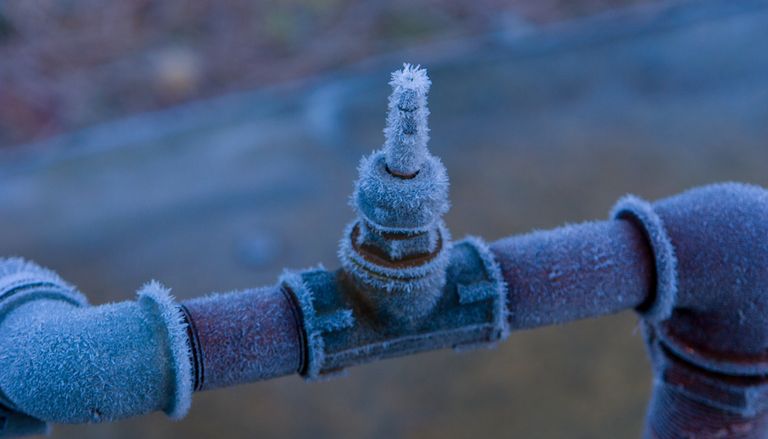Tips to Safeguard Your Pipes from Cold Weather: Professional Guidance
Tips to Safeguard Your Pipes from Cold Weather: Professional Guidance
Blog Article
We have stumbled on this article about 6 Ways to Prevent Frozen Pipes down the page on the net and concluded it made perfect sense to talk about it with you over here.

Cold weather can damage your pipes, specifically by freezing pipelines. Right here's exactly how to avoid it from taking place and what to do if it does.
Introduction
As temperature levels decline, the danger of icy pipes increases, potentially causing pricey repairs and water damage. Understanding how to avoid icy pipes is essential for property owners in cold climates.
Comprehending Frozen Pipelines
What causes pipes to ice up?
Pipelines ice up when revealed to temperature levels below 32 ° F (0 ° C) for expanded durations. As water inside the pipes ices up, it expands, taxing the pipe wall surfaces and possibly creating them to rupture.
Risks and damages
Frozen pipelines can lead to water supply disturbances, building damages, and pricey fixings. Burst pipelines can flooding homes and create comprehensive architectural damages.
Indicators of Frozen Pipes
Determining icy pipes early can stop them from bursting.
Just how to determine icy pipelines
Search for lowered water circulation from faucets, uncommon odors or sounds from pipes, and noticeable frost on exposed pipes.
Prevention Tips
Protecting vulnerable pipes
Wrap pipes in insulation sleeves or make use of heat tape to shield them from freezing temperature levels. Concentrate on pipes in unheated or exterior locations of the home.
Heating methods
Keep interior rooms adequately heated up, specifically areas with pipes. Open up cabinet doors to enable cozy air to circulate around pipes under sinks.
Securing Exterior Plumbing
Garden pipes and exterior taps
Separate and drain garden hose pipes before wintertime. Set up frost-proof faucets or cover outside taps with protected caps.
What to Do If Your Pipelines Freeze
Immediate actions to take
If you presume frozen pipes, keep taps open up to relieve stress as the ice melts. Utilize a hairdryer or towels taken in warm water to thaw pipelines gradually.
Long-Term Solutions
Architectural adjustments
Consider rerouting pipelines away from exterior walls or unheated areas. Include additional insulation to attic rooms, cellars, and crawl spaces.
Upgrading insulation
Buy top quality insulation for pipelines, attics, and walls. Appropriate insulation helps maintain regular temperature levels and lowers the threat of frozen pipelines.
Conclusion
Avoiding frozen pipes calls for proactive procedures and fast reactions. By recognizing the reasons, signs, and preventive measures, property owners can protect their pipes during cold weather.
6 Proven Ways to Prevent Frozen Pipes and Protect Your Home
Disconnect and Drain Garden Hoses
Before winter arrives, start by disconnecting your garden hoses and draining any remaining water. Close the shut-off valves that supply outdoor hose bibs and leave the outdoor faucet open to allow any residual water to drain. For extra protection, consider using faucet covers throughout the colder months. It’s also important to drain water from any sprinkler supply lines following the manufacturer’s directions.
Insulate Exposed Pipes
Insulating your pipes is an effective way to prevent freezing. Pipe insulation is readily available at home improvement stores and is relatively inexpensive. Pay close attention to pipes in unheated areas such as the attic, basement, crawl spaces, or garage. Apply foam insulation generously to create a buffer against the cold. You can also wrap your pipes in heat tape or thermostat-controlled heat cables for added warmth.
Seal Air Leaks
Inspect your home for any cracks or openings that could let in cold air. Seal any holes around the piping in interior or exterior walls, as well as the sill plates where your home rests on its foundation. Additionally, make sure to keep your garage door closed unless you’re entering or exiting. Leaving it open creates a significant air leak that can lead to frozen pipes.
Allow Warm Air Circulation
During cold snaps, it’s essential to allow warm air to circulate evenly throughout your home. Leave interior doors ajar to promote better airflow. Open kitchen and bathroom cabinets to help distribute heat consistently around the rooms. If you have small children or pets, be sure to remove any household chemicals or potentially harmful cleaners from open cabinets for safety.
Let Faucets Drip
A small trickle of water can make a big difference in preventing ice formation inside your pipes. When temperatures drop significantly, start a drip of water from all faucets served by exposed pipes. This continuous flow helps prevent the water from freezing. Additionally, running a few faucets slightly can relieve pressure inside the pipes, reducing the chances of a rupture if the water inside does freeze.
https://choateshvac.com/6-proven-ways-to-prevent-frozen-pipes-and-protect-your-home/

Do you really like more info about Preventing and dealing with frozen pipes? Place feedback further down. We'd be happy to listen to your views about this blog. In hopes that you visit us again before long. Sharing is good. Helping others is fun. I recognize the value of your readership.
Details Here Report this page